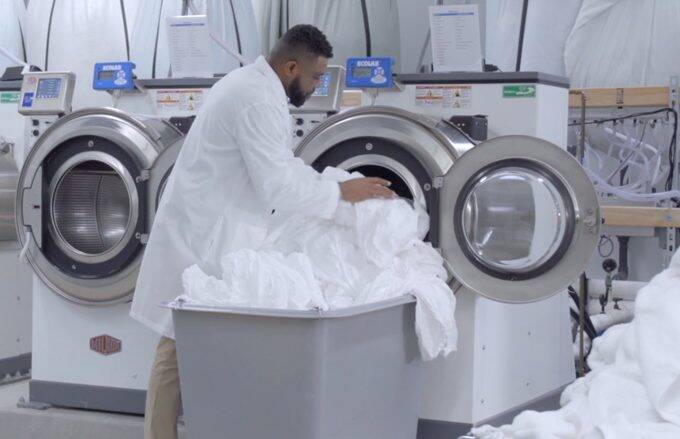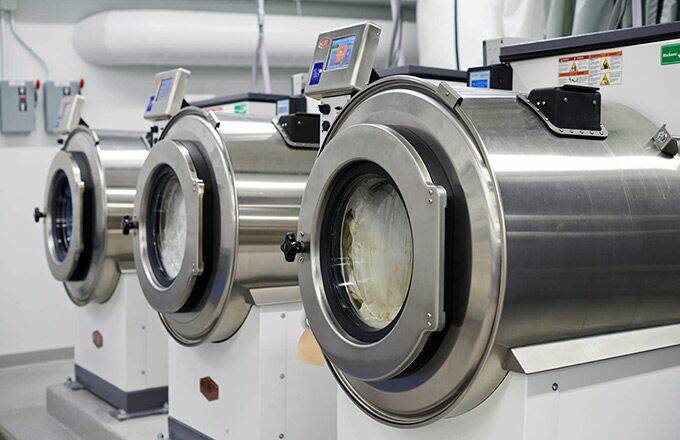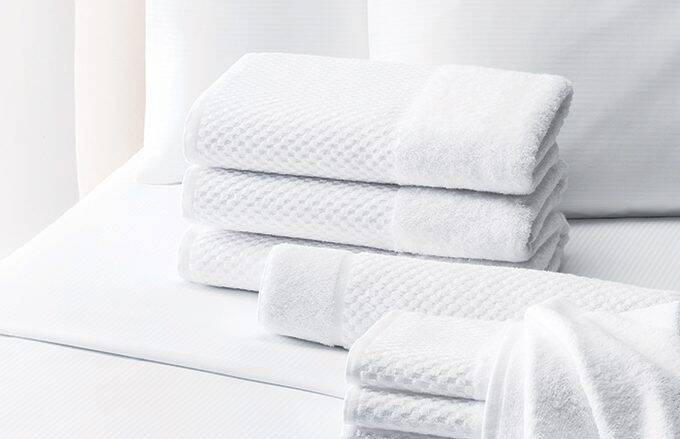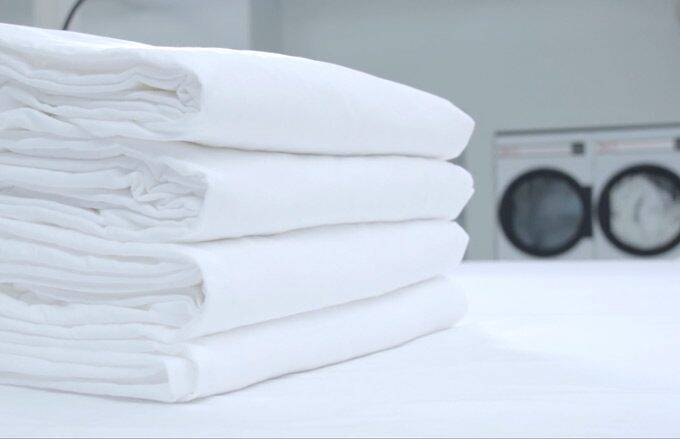January 28, 2020
VIDEO: Are These 5 Problems Ruining Your Hotel’s Linens?

General wear and tear to any sheeting and terry is an unavoidable part of the hospitality business. But our laundry experts have put together some advice to help you minimize common threats that reduce the life of your linen and terry supply.
Video: 5 Tips to Maintain and Extend Product Life of Hotel Linens
Discover how you can help extend life of sheeting and terry at your hotel property.
Tearing
Tearing can occur inside linen chutes, storage carts, shelving, bedframes, washers, dryers, or ironers. Take extra care when moving linens through these parts of the laundry process. However, as products age, they become even more susceptible to tearing, that’s why starting with stronger products, such as linens made with our Centium Core Technology®, offer superior strength wash after wash, month after month.
Staining
Stains are inevitable for hotel linens – from makeup or shoe polish on washcloths to spills or dirt on bedding – but they should be manageable. Staining or rewash rates should average around 3% and most stained items should be processed through a stain reclaim process. Recovery rates should be 80% or higher. Be diligent about spotting stains early and separating linens accordingly so that stains don’t spread in the wash.
Aggressive Washing
A wash cycle that is overly aggressive can accelerate wear on products and cause them to be removed from your inventory prematurely. Ensure that your wash process, chemistry, loading parameters, and finishing procedures are appropriately programmed for the products being washed and are managed correctly. Work with your chemical provider if necessary, to ensure that your programs and wash formula are optimized for your different load types.
Low Par Levels
A par level refers to the amount of product needed for one day’s usage. We recommend keeping a minimum of 3-par on hand for most properties. This allows the cotton to rest after laundering and regain some lost moisture, as cotton holds 7-8% of its “dry” weight in water. Water acts as a lubricating agent so it is recommended that after drying, sheets and towels be given ample time to re-hydrate before use. This could take up to 24 hours, depending on the environment. Using items with low moisture content can accelerate their wear.
Product Misuse
Product misuse can damage textiles and render them unusable. Although you can’t prevent all product misuse, providing additional products like disposable make-up removers and shoe-polish rags are ways to help deter this misuse.
Extending linen product life and minimizing loss starts with a higher quality product. But even then, sheeting and terry can and will degrade or become damaged over time. Although you can’t prevent all linen lost to tearing, staining, or mysterious disappearance, here is a brief summary of tips to help minimize laundry related product loss:
- Starting with higher quality products will greatly increase overall product life.
- Maintain a process to monitor staining and reclaim rates.
- Ensure that your wash chemistry isn’t too aggressive for the products you are processing.
- Laundered products need to rest before use for optimal performance.
- Provide guests with specific products for make-up removal and shoe polish.
Have any other questions about laundry? Ask Our Laundry Experts Today.
Related Content

Common Laundry Mistakes that Can Ruin Hotel Linens
Let’s explore important laundry DON’Ts from our laundry experts that will keep your linens in tip top shape.

Use This 5-Step Process for Hotel Linens That Perform Better
Ensuring proper care of your bed linens is the best strategy to extend product life and maintain high quality performance. Our laundry experts have put together five essential steps to help you launder your hotel’s linens the right way.

VIDEO: 5 Tips to Help Your Hotel Laundry Reduce Wrinkles
Proper laundry procedures can help prevent wrinkles, as well as extend product life. But there are ways to minimize wrinkles with just a few simple steps.